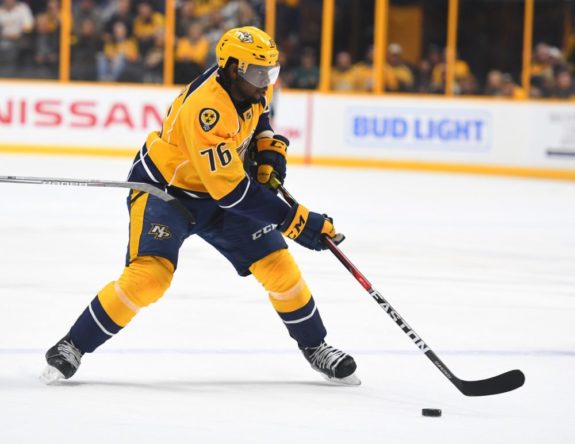The Pittsburgh Penguins’ power play so far this Final has been disappointing, to say the least. They have been held to just three shots, none of them goals, on their last ten man advantages. But the Penguins’ power play issues run even deeper than a lack of scoring. The power play is worse than ineffective — it’s actually giving the Nashville Predators more scoring chances than it is the Penguins.
Penguins’ Power Play Problems
Last series, the Penguins struggled to make their power play effective against the heavy defensive trap of the Ottawa Senators. It seemed like the team had made breakthroughs, especially when they scored on all three of their power plays in Game 5 against the Senators. But now, the ghost of power plays past has returned, and the Penguins are being stymied by an extremely effective Predators’ penalty kill.

The Penguins are grappling with a fundamental flaw in their power play: they cannot get away with a clean zone entry. Faced with the Predators’ aggressive defense, they’re unable to get it past the blue line without having the puck checked away.
This hurts the Penguins beyond not allowing them to set up any kind of sustained offensive pressure during the man advantage. When the player attempting the zone entry gives away the puck after the Penguins have already set up in the offensive zone, they hand the Predators a breakaway or odd-man rush that the Penguins are not prepared to stop. This leads to the Predators having more scoring chances on the Penguins’ power plays than the Penguins do themselves.

In Game 3, the Penguins tallied four attempted shots on their first power play; meanwhile, the Predators attempted three. On the next Penguins power play, the Predators were the only team to attempt a shot. By the third power play, the Penguins were being outshot in attempts 4-1 on their own man advantage. When down a man, Nashville had eight attempted shots total in Game 3; the Penguins had only five while up a player.
Need to Find the ‘Advantage’ in ‘Man Advantage’
The Predators did not score while shorthanded in Game 3, but the fact that the Penguins are being kept on their heels while up a man is hugely damaging. The Predators’ penalty kill setup has proved to be actively dangerous for the Penguins. It’s gotten to the point where being given a power play actually seems to kill the Penguins’ momentum rather than bolstering it.

Zone entries are killing the Penguins. In Sunday’s practice, the team spent most of their time watching video review of the power play and testing different power play units. That’s a very good sign. The Penguins can’t keep allowing themselves to be walked over by the Predators’ penalty kill like this.
The Penguins need to leave zone entries only to the puck handlers with the best chance of getting it across the blue line, like Sidney Crosby. They need to stop trying to pass it through a web of aggressive Predator pokechecks and just put shots on goal when they have a chance. And most importantly, they need to stop making Matt Murray the most effective player on their own power play.